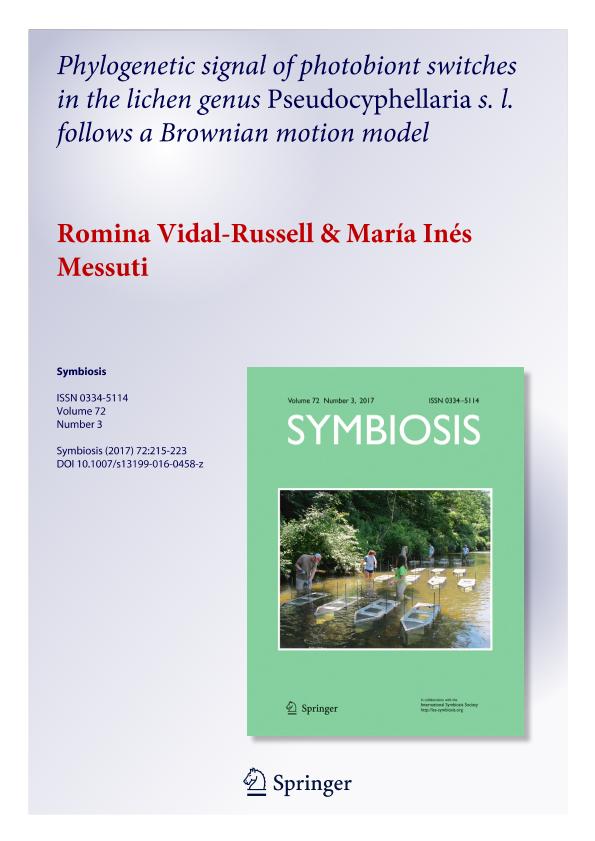Artículo
Phylogenetic signal of photobiont switches in the lichen genus Pseudocyphellaria s. l. follows a Brownian motion model
Fecha de publicación:
06/2017
Editorial:
Springer
Revista:
Symbiosis
ISSN:
0334-5114
e-ISSN:
1878-7665
Idioma:
Inglés
Tipo de recurso:
Artículo publicado
Clasificación temática:
Resumen
Lichen symbioses are defined as a symbiotic relationship between a mycobiont (generally an ascomycete) and one or more photobionts (green algae or/and cyanobacteria). It was proposed that cephalodia emancipation is an evolutionary driver for photobiont switch from chlorophyte to cyanobacteria. In this study we want to test the monophyly of cyanolichens and to measure the phylogenetic signal of the symbiotic relationship between cyanobacteria and a mycobiont partner in the lichen genus Pseudocyphellaria. This genus includes some species that have a chlorophyte as primary photobiont (and Nostoc in internal cephalodia), while others have only cyanobacteria. In a phylogenetic framework we measure the phylogenetic signal (or phylogenetic dispersion) as well as mapped photobiont switches performing stochastic character mapping. Results show that having cyanobacteria as main photobiont has a strong phylogenetic signal that follows a Brownian motion model. Seven clades in the phylogeny had an ancestor with cyanobacteria. Reversal to a green algae photobiont is rare. Several switches were estimated through evolutionary time suggesting that there was some flexibility in these traits along the phylogeny; however, close relatives retained cyanobacteria as main photobiont throughout the cyanolichen’s history. Photobiont switches from green algae to cyanobacteria might enhance ecotypical differentiation. These ecotypes could lead to several speciation events in the new lineage resulting in the phylogenetic signal found in this study. We give insights into the origin of lichen diversity exploring the photobiont switch in a phylogenetic context in Pseudocyphellaria s. l. as a model genus.
Palabras clave:
Evolutionary Driver
,
Lichenized Fungi
,
Photobiont Switch
,
Speciation
,
Symbiosis
Archivos asociados
Licencia
Identificadores
Colecciones
Articulos(INIBIOMA)
Articulos de INST. DE INVEST.EN BIODIVERSIDAD Y MEDIOAMBIENTE
Articulos de INST. DE INVEST.EN BIODIVERSIDAD Y MEDIOAMBIENTE
Citación
Vidal Russell, Romina; Messuti, Maria Ines; Phylogenetic signal of photobiont switches in the lichen genus Pseudocyphellaria s. l. follows a Brownian motion model; Springer; Symbiosis; 72; 3; 6-2017; 215-223
Compartir
Altmétricas




